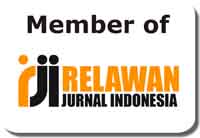University Students' Motivation in Learning Arabic and English as Foreign Languages in Aceh
Abstract
Keywords
Full Text:
PDFReferences
Achmad, D., & Yusuf, Y. Q. (2016). Exploring the motivational factors for learning English in Aceh. Dirasat: Human and Social Sciences, 43(5), 2223-2234.
Adegboyega, L. O. (2018). Influence of achievement motivation on Nigerian undergraduates' attitude towards examination. International Journal of Instruction, 11(1), 77-88.
Al Harthy, S. R. (2017). English language motivation between gender and cultures. Journal of Educational and Social Research, 7(2), 123-132.
Alwasilah, A. C. (2013). Policy on foreign language education in Indonesia. International Journal of Education, 7(1), 1-19.
Ames, C. A. (1990). Motivation: What teachers need to know. Teachers College Record, 91(3), 409-421.
Brataningrum, N. P., & Saptono, L. (2017). The influence of the effectiveness of accounting learnıng process on student learning achievements. Cakrawala Pendidikan, 36(3), 342-356.
Chalak, A., & Kassaian, Z. (2010). Motivation and attitudes of Iranian undergraduate EFL students towards learning English. GEMA Online Journal of Language Studies, 10(2), 37-56.
Christiana, I. O. (2009). Influence of motivation on students' academic performance. The Social Sciences, 4(1), 30-36.
Cook, V. (2016). Second language learning and language teaching (5th Ed.). Beijing: Foreign Language Teaching and Research Press.
Deci, E. L., & Ryan, R. M. (1985). Intrinsic motivation and self-determination in human behavior. New York: Plenum.
Dörnyei, Z. (1998). Motivation in second and foreign language learning. Language Teaching, 31, 117-35.
Dörnyei, Z. (2009). The L2 motivational self-system. In Z. Dörnyei & E. Ushioda (Eds.), Motivation, language ıdentity, and the l2 self (pp. 9-42). Bristol: Multilingual Matters.
Ellis, R. (1994). The study of second language acquisition. Oxford: Oxford University Press.
Gardner, R. C., & MacIntyre, P. D. (1993). On the measurement of affective variables in second language learning. Language Learning, 43, 157-194.
Gholami, R, Allahyar, N., & Rafik-Galea, S. (2012). Integrative motivation as an essential determinant of achievement: A case of EFL high school students. World Applied Sciences Journal, 17(11), 1416-1424.
Gilakjani, A. P., Leong, L.-M., & Sabouri, N. B. (2012). A study on the role of motivation in foreign language learning and teaching. International Journal of Modern Education and Computer Science, 7, 9-16.
Kachru, B. B. (1992). Models for non-native Englishes. In B. B. Kachru (Ed.), The other tongue: Englishes across cultures (2nd Ed.) (pp. 48–75). Urbana: University of Illinois Press.
Kelmendi, M. (2017). Reward and performance as a key element of motivation. Journal of Educational and Social Research, 7(1), 181-185.
Littlewood, W. (1984). Foreign and second language learning: Language acquisition research and ıts ımplications for the classroom. Cambridge: Cambridge University Press.
Mahadi, T. S. T., & Jafari, S. M. (2012). Motivation, its types, and its impacts in language learning. International Journal of Business and Social Science, 3(24), 230-235.
Masruddin., & Pratiwi, H. (2016). Students' perception and their attitude towards English teachers' personality. Langkawi Journal of The Association for Arabic and English, 2(2), 202-218.
Monderna, E., & Voinarovska, N. (2019). Promoting personal motivation within professional education. Journal of Educational and Social Research, 9(2), 1-7.
Noels, K. A. (2001). New orientations in language learning motivation: Towards a model of intrinsic, extrinsic, and integrative orientations and motivation. In Z. Dörnyei & R. Schmidt (Eds.), Motivation and second language acquisition (pp. 43-68). Honolulu: Second Language Teaching & Curriculum Center, University of Hawai'i.
Norris-Holt, J. (2001). Motivation as contributing factor in second language acquisition. The Internet TESL Journal, 7(6). Retrieved from http://iteslj.org/Articles/Norris-Motivation.html
Obeidat, M. M. (2005). Attitudes and motivation in second language learning. Journal of Faculty of Education, 18(22), 1-17.
Omodan, B. I., & Tsotetsi, C. T. (2018). Student-teacher relationships as a panacea for students' academic performance in Nigeria secondary schools: An attachment perspective. Journal of Social Studies Education Research, 9(4), 82-101.
Oxford, R., & Shearin, J. (1994). Language learning motivation: Expanding the theoretical framework. The Modern Language Journal, 78(1), 12-28.
Pintrich, P. R. & Schunk, D. H. (1996). Motivation in education: Theory, research & applications. Englewood Cliffs, N.J.: Merrill.
Priyono. (2018). The implementation of PAIKEM (Active, Innovative, Creative, Effective, and Exiting Learning) and conventional learning method to ımprove student learning results. Journal of Social Studies Education Research, 9(2), 124-137.
Rahman, S. (2005). Orientations and motivation in English language learning: A study of Bangladeshi students at undergraduate level. Asian EFL Journal, 7(3), 29-55.
Rahman, D., & Sahayu, W. (2020). How do foreign language teachers motivate students in language learning? Studies in English Language and Education, 7(1), 181-193.
Ramage, K. (1990). Motivation factors and persistence in foreign language study. Language Learning, 40, 189-219.
Roshandel, J., Ghonsooly, B., & Ghanizadeh, A. (2018). L2 motivational self-system and self-efficacy: A quantitative survey-based study. International Journal of Instruction, 11(1), 329-344.
Rost, M. (2006). Generating student motivation. New York: Pearson Education.
Ryan, R. M., & Deci, R. L. (2000). Intrinsic and extrinsic motivations: Classic definitions and new directions. Contemporary Educational Psychology, 25(1), 54-67.
Sardiman, A. M. (2012). Interaksi dan motivasi belajar mengajar [Interaction and motivation in teaching and learning]. Jakarta: Rajawali.
Sikhwari T. D. (2014). A study of the relationship between motivation self-concept and academic achievement of students at the University of Limpopo Province, South Africa. International Journal of Educational Science, 6(1), 19-25.
Sirait, S. (2016). Moderate Muslim: Mapping the ideology of mass Islamic organizations in Indonesia. Journal of Islamic Studies and Culture, 4(1), 115-126.
Solichun, M. (2014). Problematika pembelajaran Bahasa Arab: Studi kasus di MTSN Susukan dan MTS Terpadu Al-Mustaqim Timpik Kecamatan Susukan Kabupaten Semarang tahun 2013 [Problems in learning of Arabic: A case study in MTSN Susukan and Integrated MTS Al-Mustaqim Timpik Kecamatan Susukan Semarang Regency year 2013] (Master’s thesis). Sekolah Tinggi Agama Islam Negeri Salatiga, Semarang.
Syukri, S., & Humaera, I. (2019). Gaining motivation on English learning for special need students using flashcards, foldable books and posters in EFL context. Langkawi Journal of The Association for Arabic and English, 5(2), 91-101.
Williams, K. C., & Williams, C. C. (2011). Five key ingredients for improving motivation. Research in Higher Education Journal, 12, 1-23.
Wimolmas, R. (2013). A survey study of motivation in English language learning of first year undergraduate students at Sirindhorn International Institute of Technology (SIIT), Thailand. Proceedings of the 3rd International Conference on Foreign Language Learning and Teaching 2013 (FLLT 2013) (pp. 904-915). Bangkok, Thailand.
Yashima, T. (2002). Willingness to communicate in a second language: The Japanese context. Modern Language Journal, 86(1), 54-66.
Yusuf, Q., Asyik, A. G., Yusuf, Y. Q., & Rusdi, L. (2017). "Listen, do, repeat, understand and remember": Teaching English to very young children in Aceh. Iranian Journal of Language Teaching Research, 5(2), 113-132.
Zanghar, A. (2012). Instrumental and integrative motivation among undergraduate Libyan students of English as a Foreign Language (Master's thesis). Colorado State University, Fort Collins, CO.
DOI: http://dx.doi.org/10.31332/lkw.v0i0.1981
Copyright (c) 2020 Yunisrina Qismullah Yusuf, Bustami Usman, Yuyun Nailufar, Raja Nor Safinas Raja Harun

This work is licensed under a Creative Commons Attribution-ShareAlike 4.0 International License.
Langkawi: Journal of The Association for Arabic and English indexed by:



















.png)
.png)

.png)
2.png)








